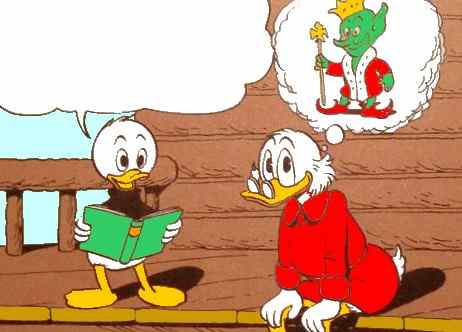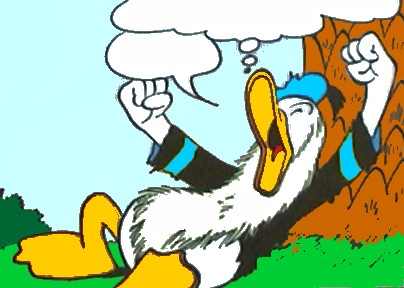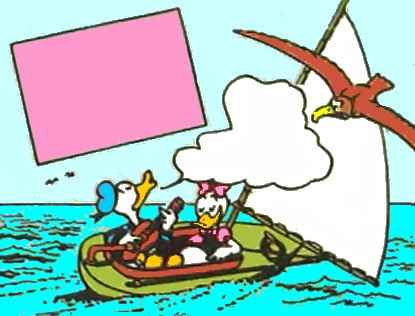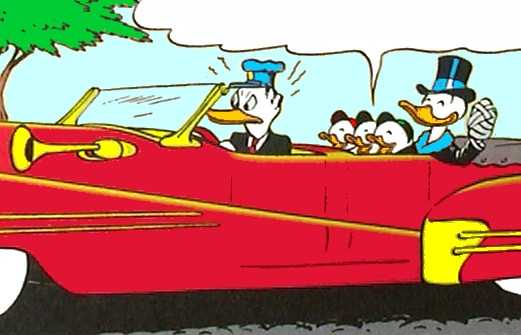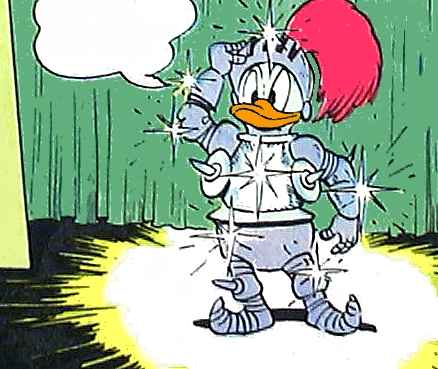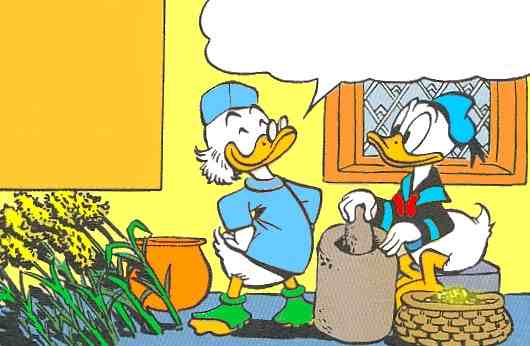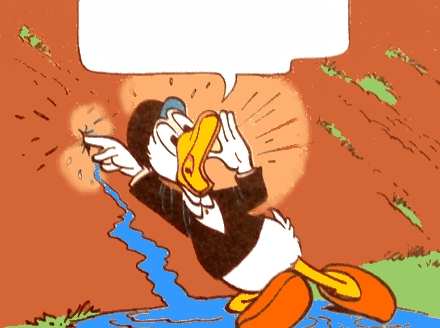| FAIRY TALES | |||||||||
Barks was fond of fairy tales, and he
sometimes used ingredients from several in his stories. Examples are:
Hans Christian Andersen's The Little Mermaid in U$68 Hall of
the Mermaid Queen, The Snow Queen in WDCS196 'The Snow
Princess Story', and Charles Perrault's Cinderella in
WDCS277 The Duckburg Pet Parade. Years later, when he was seeking
motifs for his waterfowl paintings, Barks made lists covering suitable
subjects such as Cinderella and Snow White as well as memos to look at
Hans Christian Andersen's and the brothers Grimm's fairy tales. In U$22 The Golden River Scrooge buys a valley for peace and quiet. But a waterfall there looks like it is flowing gold! The initial story was written in 1860 by British philosopher and author John Ruskin (1819-1900) and titled The King of The Golden River. Barks enjoyed the concept and transformed it to his duck universe with ample references to the initial tale. In U$37 Cave of Ali Baba Barks included several elements from the ancient 1,001 Arabian Nights such as Jinns, whirling dervishes, and Rocs, and a direct reference to the Ali Baba chapter was the use of the exclamation Open Sesame, that opened the cliff door to a hidden treasure cave. In WDCS110 'Goldilocks' the story is loosely built on an old German folk tale transcribed to paper by the German brothers Jakob Grimm (1785-1863) and Wilhelm Grimm (1786-1859). The brothers were librarians by trade and they collected more than 200 folk tales which they wrote down for the first time in order to preserve them for posterity, i.e. they did not invent the stories themselves. Barks used sequences from the tale (that is known as both The Three Bears and Goldilocks and the Three Bears) and reworked them to fit his plotline. In WDCS112 'Rip van Winkle' Barks used a fable from Washington Irving's (1783-1859) classic story Rip van Winkle from 1819 featuring the Dutch immigrant Rip Van Winkle and his 20-year nap in the Catskill Mountains before waking up to a much-changed world. Barks was intrigued by the basic setup, but his story was long underway because he had difficulties adapting it and putting it together, until he finally came up with his plot. |
